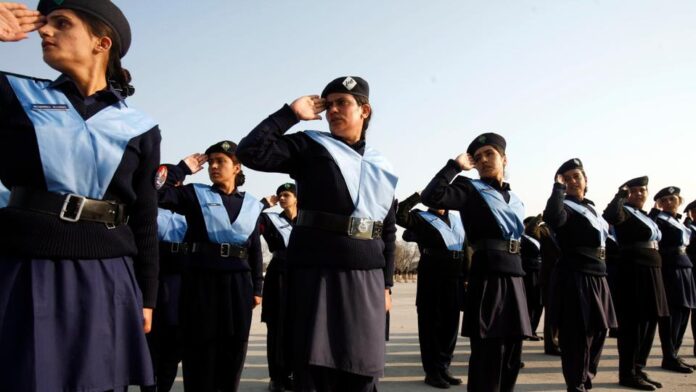“No nation can rise to the height of glory unless your women are side by side with you.” Quaid-e-Azam Muhammad Ali Jinnah
“My counterparts devised a very tough training for me. There was an attitudinal change as men were not used to working with a female officer. It was a challenging time. It was not easy”, Helena Iqbal Saeed, Pakistan’s 1st Female Additional Inspector General (AIG), recalled her early days at the police training center while speaking to a media outlet. Helena hails from Quetta, Balochistan.
Being a bureaucrat himself, Helena’s father wanted her to join the Pakistani civil service. She initially served in the ministry of foreign affairs but ended up discovering her forte in police service. Helena was raised in a relatively liberal family where daughters and sons were given equal agency. “But this was not common at that time”, she underscored.
Two decades ago, it was unusual for men to see women in uniform. The same happened to Helena when she attended her first training as a police officer. “However, it eventually started seeming normal for them and me as well”, she said.
Female police officers make up only about 1.5 percent of Pakistan’s total police force, according to the United Nations Office on Drugs and Crime (UNODC). This figure is significantly lower in Balochistan, one of Pakistan’s four provinces, where structural and cultural restrictions make it difficult for women to work outside of their conventional and social responsibilities as housewives, mothers, and primary caregivers. Women are frequently prevented from seeking equal participation in most occupations by social pressure or expectations.
With time, Pakistani women seem to have changed their career ambitions and are excelling in fields such as civil services, STEM, entrepreneurship, art, etc. For instance, in civil service, few women opted for police or foreign service, but now the number of female police officers and diplomats is increasing. However, the progress is slow and it might take decades for Pakistani women to have a significant representation in all the fields.
As per a study by the World Bank, girls account for 57% of all out-of-school children in Pakistan and are subjected to systematic discrimination. Though data suggests that tertiary enrollment rates have nearly equalized in recent years, the data confirms that gender equity at all levels of education remains elusive Women earn much fewer PhDs than men, and as a result, they are significantly underrepresented in STEM fields.
Besides, women’s political participation over the years has increased. As per World Economic Forum’s Global Gender Gap Report 2021, Pakistan ranks 98th in terms of political empowerment, 102nd in terms of Women in Parliament, and 119th in terms of Women in Ministerial Positions. In comparison to male numbers of 79.8 and 89.3, the percentages of female legislators (20.2) and ministers (10.7) are extremely low. Pakistan, on the other hand, ranks 33rd in Years with Female Head of State, with only 4.7 years in the last 50 years, far fewer than the 45.3 years for Male Head of State. Moreover, Pakistan’s current cabinet has 5 women ministers having major portfolios.
Things are changing nevertheless. Slow but steady progress on women’s presence in public spheres is likely to elevate Pakistan’s global standing on the gender parity index. The relevant stakeholders’ continuous commitment and efforts are required for empowering women by giving them their due space in the public sphere.




